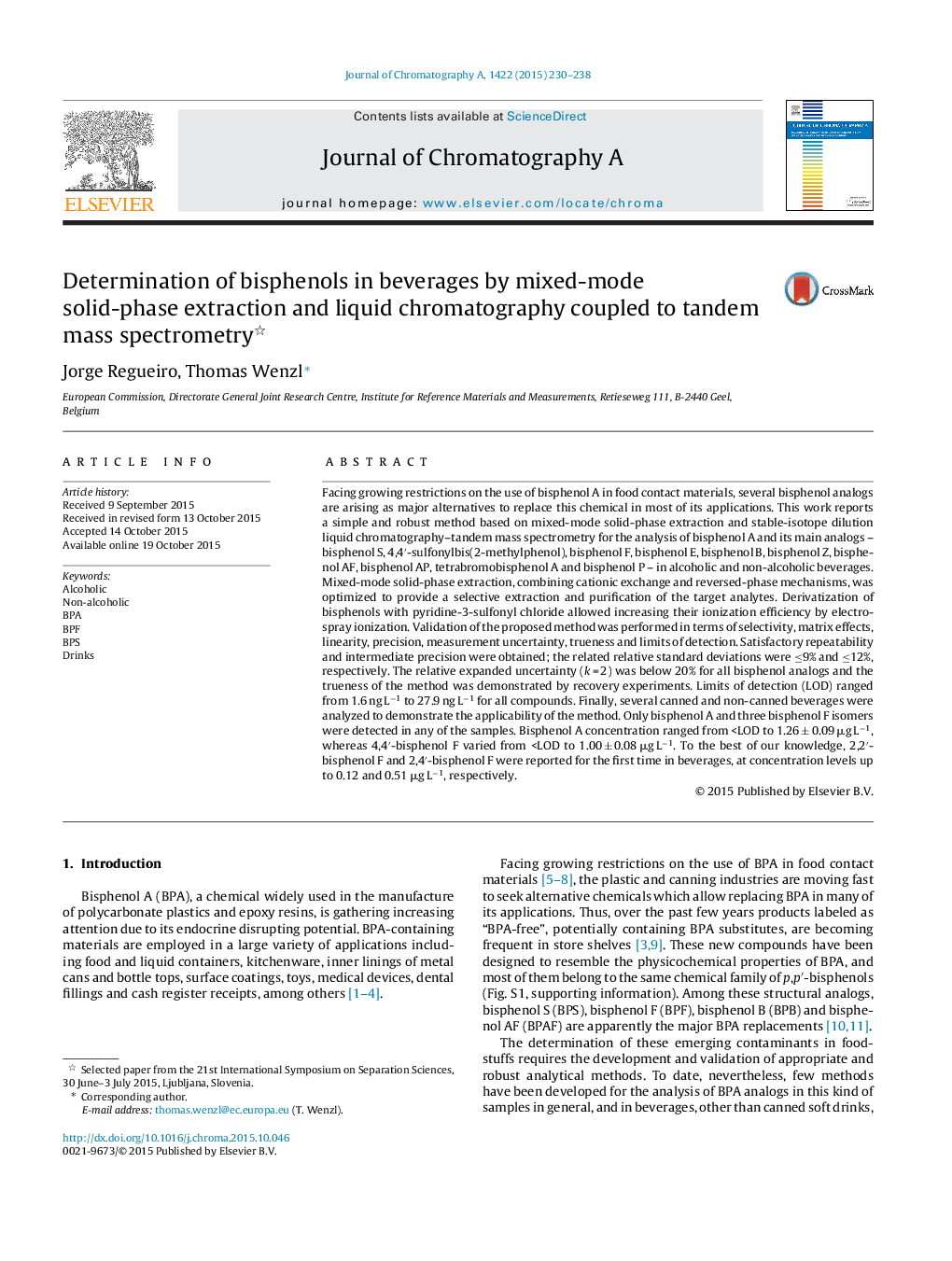| Article ID | Journal | Published Year | Pages | File Type |
|---|---|---|---|---|
| 7611081 | Journal of Chromatography A | 2015 | 9 Pages |
Abstract
Facing growing restrictions on the use of bisphenol A in food contact materials, several bisphenol analogs are arising as major alternatives to replace this chemical in most of its applications. This work reports a simple and robust method based on mixed-mode solid-phase extraction and stable-isotope dilution liquid chromatography-tandem mass spectrometry for the analysis of bisphenol A and its main analogs - bisphenol S, 4,4â²-sulfonylbis(2-methylphenol), bisphenol F, bisphenol E, bisphenol B, bisphenol Z, bisphenol AF, bisphenol AP, tetrabromobisphenol A and bisphenol P - in alcoholic and non-alcoholic beverages. Mixed-mode solid-phase extraction, combining cationic exchange and reversed-phase mechanisms, was optimized to provide a selective extraction and purification of the target analytes. Derivatization of bisphenols with pyridine-3-sulfonyl chloride allowed increasing their ionization efficiency by electrospray ionization. Validation of the proposed method was performed in terms of selectivity, matrix effects, linearity, precision, measurement uncertainty, trueness and limits of detection. Satisfactory repeatability and intermediate precision were obtained; the related relative standard deviations were â¤9% and â¤12%, respectively. The relative expanded uncertainty (k = 2) was below 20% for all bisphenol analogs and the trueness of the method was demonstrated by recovery experiments. Limits of detection (LOD) ranged from 1.6 ng Lâ1 to 27.9 ng Lâ1 for all compounds. Finally, several canned and non-canned beverages were analyzed to demonstrate the applicability of the method. Only bisphenol A and three bisphenol F isomers were detected in any of the samples. Bisphenol A concentration ranged from
Related Topics
Physical Sciences and Engineering
Chemistry
Analytical Chemistry
Authors
Jorge Regueiro, Thomas Wenzl,
